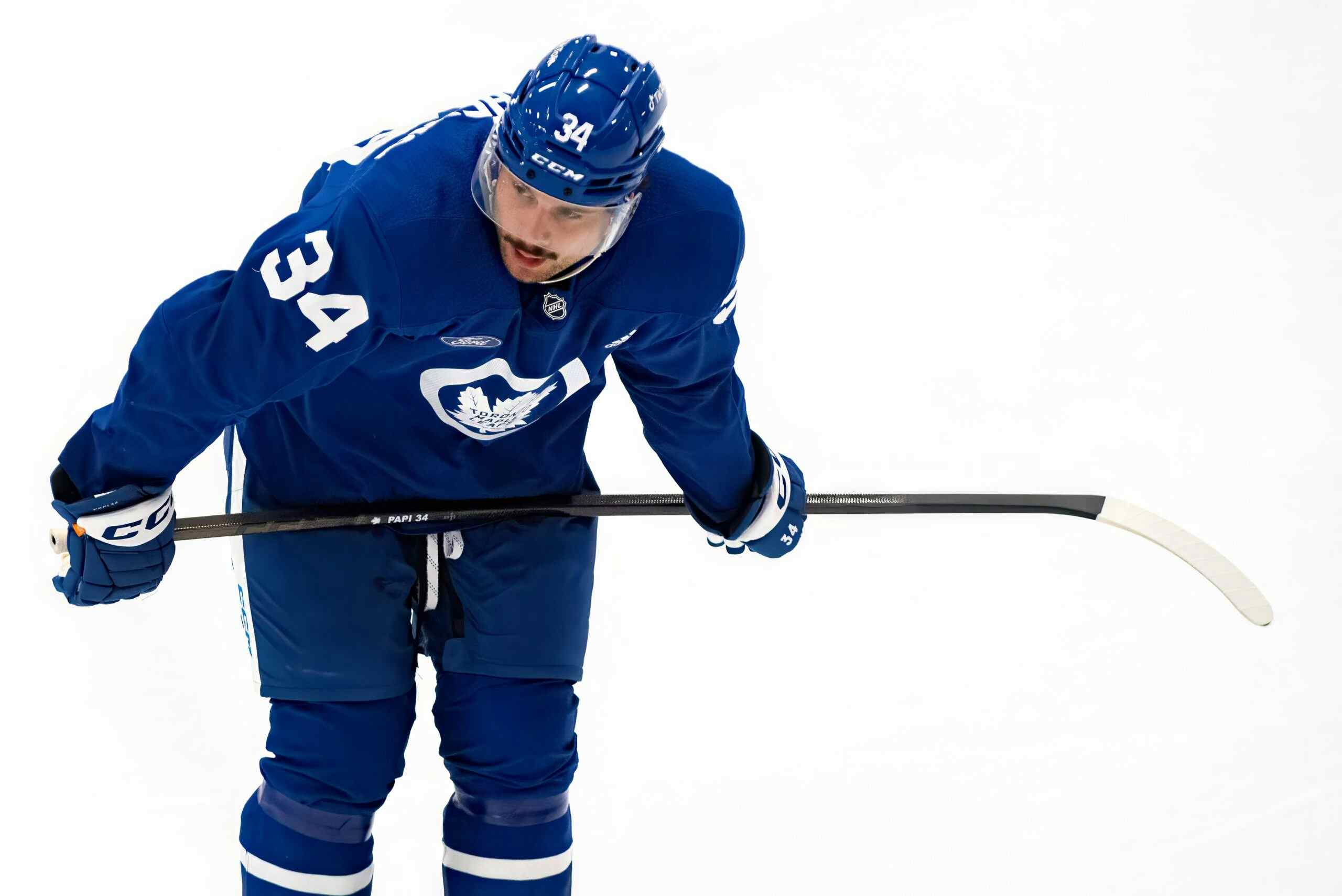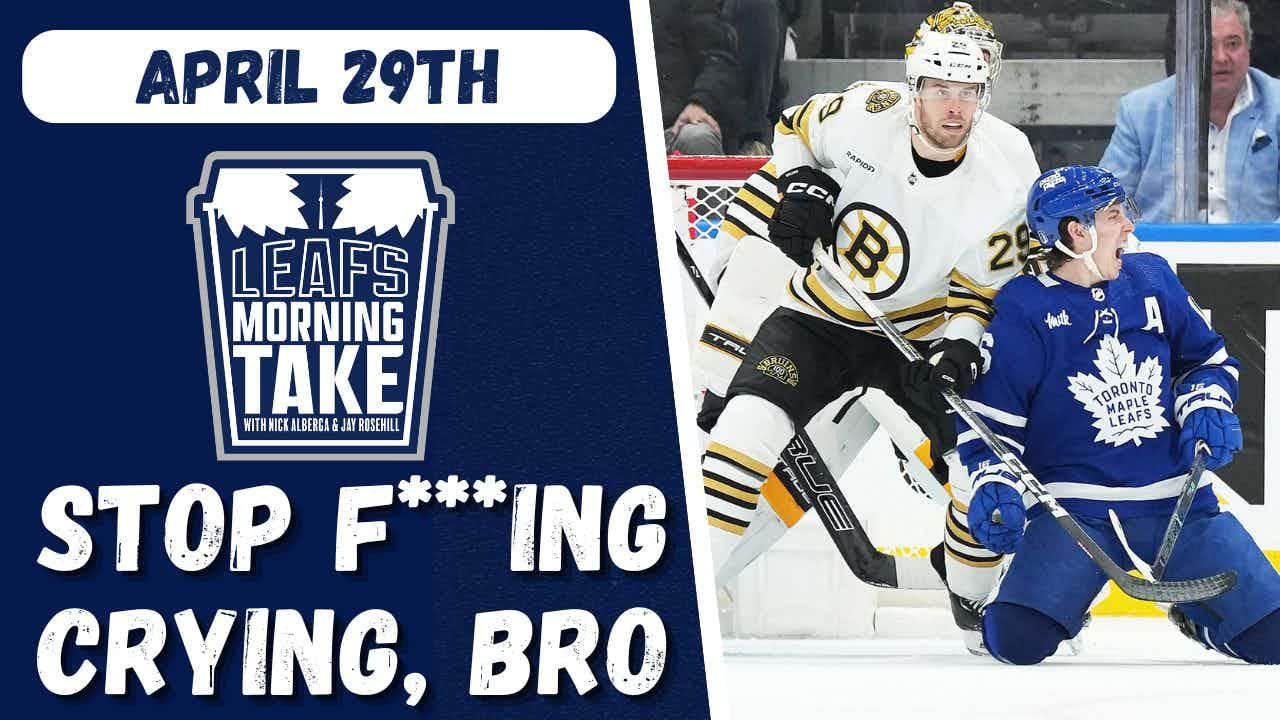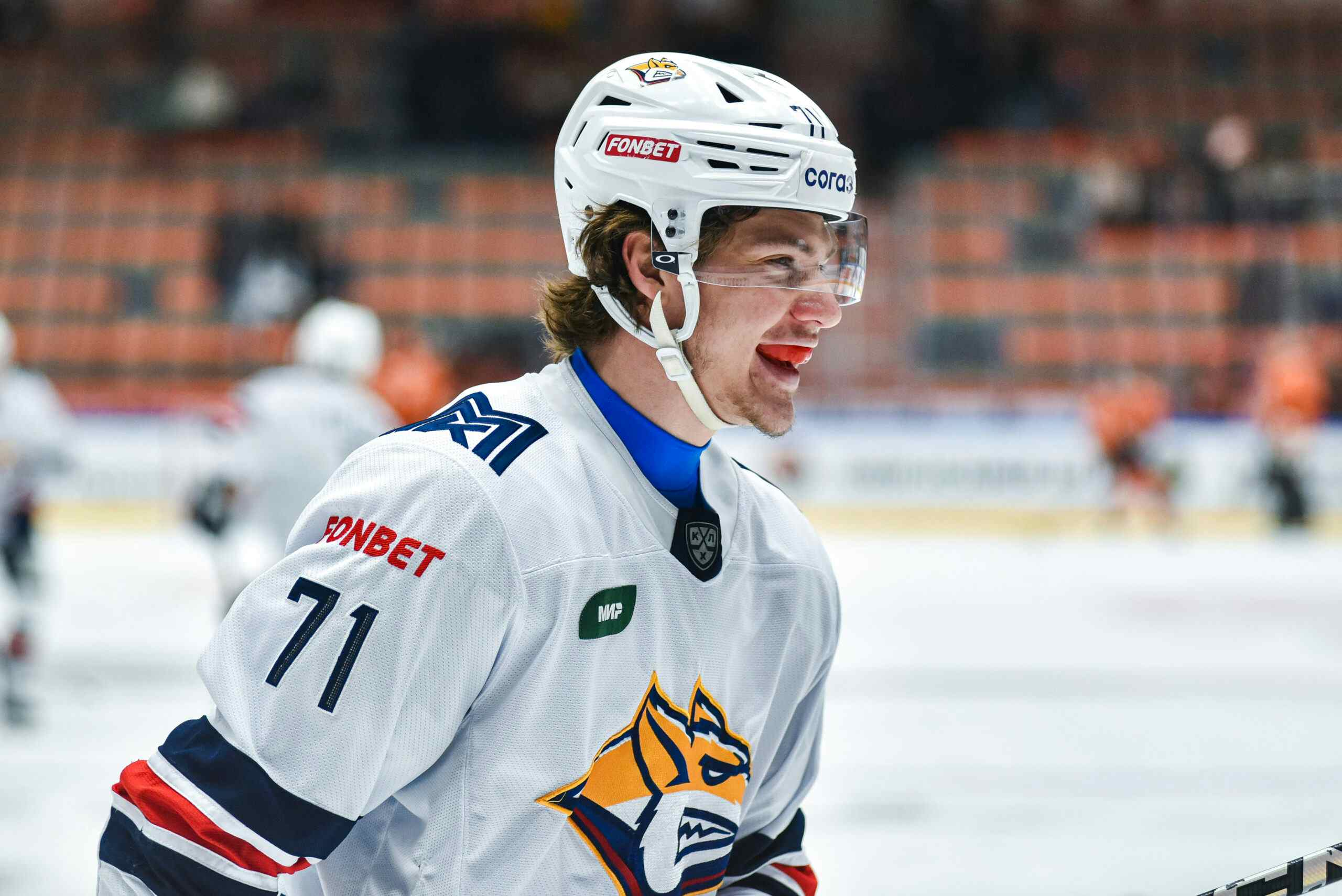Many Rivals Don’t Want The Maple Leafs To Be Patient
By Greg Brady
7 years ago
Photo Credit: Eric Hartline/USA TODAY SPORTS
We all see that scripted warning (more a statement of fact) etched on top of the glass in a car’s rear-view mirrors: OBJECTS IN MIRROR ARE CLOSER THAN THEY APPEAR.
We notice it, probably, for the first time, as a little kid, and we think we know what it truly means, but we’re not sure. So we ask one of our parents, and they explain the concept, and why it’s written on the mirrors, anyway. More than likely, we get told it’s to “prevent accidents”, whether the driver is changing lanes, backing up in a parking lot, or in case, one of those “objects” is getting way too close (closer than it appears!) and the driver needs to take evasive action.
So, the metaphor in itself may just work for the 2016-17 Toronto Maple Leafs. And the object is “success”. Is success closer that it appears for the Leafs, based on their pre-All Star Break performance. Or, are there some illusory things about not just how they have played, but how their rivals around them have.
I spoke to two people on the weekend, one in the broadcasting business, and one in the hockey business (though he has dabbled in broadcasting and should do more of it!), both are, shall we say, closely knit to two of the Leafs’ Atlantic Division rivals.
Without me sharing too many details of the conversation, which was 80 percent hockey, and 20 percent other stuff going on in our various so-called lives, it was uncanny how similar the conversations went when it came to the Toronto Maple Leafs. It was as though the two people I talked to, had spoken beforehand, gathered talking points together, and decided in two distinct, random conversations, to present a united front of opinions. They include the following five major points:
1. Toronto is the absolute talk of the league, with their young talent.
2. Mike Babcock is having as good a “coaching season” as perhaps he’s had since he was with Anaheim, in 2003, when the Ducks improved from 69 to 95 points, and won fifteen playoff games, starting each and every series on the road.
3. Toronto is getting the best goaltending from Frederik Anderson the franchise has received since Ed Belfour’s second Leafs’ season in 2003-04.
4. Toronto shouldn’t do a damn thing at the Trade Deadline, regardless of standings. Trading a younger player or a future first or second round pick would be asinine, and disrupt this swiftly-moving process of rebuilding, really only underway since February 2015, in the aftermath of the Randy Carlyle firing as head coach, and prior to the drafting of Mitch Marner.
5. Toronto will be as strong a Stanley Cup contender in 4-5 years as any team in the Eastern Conference will be.
So…..that’s pretty high praise, I figured. It tells me that every single time this season I’ve considered any of those five points to be gospel (or three out of five, or even four), I’ve wondered whether I’m just seeing things from inside the bubble. We all know the bubble that Toronto can be with regards to hockey. We’re too quick to judge trades, evaluate players, overrate prospects, and in most cases, either defend or castigate whoever the general managers and head coaches are. Mike Babcock is no miracle worker, he can’t heal the sick and poor, and rumour has it he drives to work and doesn’t levitate and fly there. But, in the same breath, Ron Wilson and Paul Maurice didn’t possess far below-average IQs and could barely put left foot in front of right and walk behind the Maple Leafs’ bench each evening.
But let’s examine point #4. I’ve even been in on the concept of being a “minor purchaser” before the Deadline, specifically because it’s an inarguably very wide-open Atlantic Division this season. We all saw the signs it would be from the first ten games forward, and it’s held true now for almost fifty of them.
Or are the Leafs overachieving by riding a lot of youthful exuberance (and of course, talent) and also not being hamstrung by any significant player having what we’d call a down season? Talk amongst your buddies about that next time you’re watching this team — who is having a bad season? Is Leo Komarov the closest? Of course, Komarov wasn’t going to match his offensive numbers from last year (19-17-36 in 67 games). First, there’s more talent on the roster that limits the offensive opportunities and power play time Komarov received last year. Second, Komarov’s second half was like a car going into the ditch compared to his first half offensively in 2015-16. After 31 points (16 goals) in 48 games from October-January, he settled for a mere 5 points (3 goals) in 19 games from February-April.
What about Morgan Rielly? Where’s the offensive flair? Well, I’m in the middle on Rielly. He’s not going to be a perennial all-star like many claim and he isn’t regressing to a level where he isn’t the Maple Leafs best defenceman. Rielly, to me, won’t ever play on a Team Canada in a best-on-best tournament but that’s quite ok. But I didn’t expect a big leap offensively in the NHL from his WHL numbers. That simply doesn’t happen with players. and it never will, especially defencemen. Rielly played about 30 minutes a night for Moose Jaw, the season after he was drafted by the Leafs, and averaged below a point per game (though not far below, with 54 points in 60 games — just the 12 goals, though). Anyone expecting Rielly to emerge someday as a guy who puts up offensive numbers like Duncan Keith or Shea Weber are absolutely dreaming. He may never have a 50-point NHL season, but being around 10 goals and 30-35 assists are fine for a player of his calibre and current situation. He’s underachieved offensively this year, no question. But we all agree, the team’s notably better with him than without. Not an earth-shattering conclusion there.
So add up the health of the team, an elite head coach, a legitimate #1 goalie, potent and improving young forwards, a better-than-expected blueline, and as importantly, a real mash-up of inconsistent Atlantic Division opponents. Florida regressed, and regressed badly from last season. Buffalo isn’t sure what they are just yet, and are behind schedule after back-to-back last-place finishes prior to last season. Boston is a very confusing team — still with productive yet aging veterans, and some young talent found in the early-to-mid Draft rounds, yet unbelievably inconsistent, leading many to point the finger at head coach Claude Julien as perhaps being unable to be productive with the same messages anymore.
Tampa Bay isn’t surviving nearly as well in a year without Steven Stamkos, for the most part, as they were two seasons ago when he shattered his leg in Boston. No one really believes Ottawa isn’t playing above their head to some extent, the question is how much. And then there’s a lousy Detroit team, 6-0 in shootouts, yet only 14 regulation wins in 49 games, despite above-average goaltending much of the first half of the season (that’s changed considerably since mid-December).
So with some element of inconsistency, lack of depth, dysfunction, or just plain lousy hockey a factor in every other division rival, except the Montreal Canadiens, isn’t there a window for the Maple Leafs to make a push this season. To add a piece, maybe two. Get a scoring winger to play in the Top 9, add a rental D-man that is comfortable in the Top 4 and on any special teams unit.
Remember, the Leafs still owe Anaheim a second-round pick this summer. The Ducks will get the “middle pick” in order of the three picks Toronto owns (their own, the Senators’ pick from the Phaneuf trade, and the Sharks pick from the Polak/Spaling trade. The Leafs also might see this summer as the best option to “make good” on the compensation owed to Detroit for the signing of Mike Babcock as head coach, and to the Devils for the signing of Lou Lamoriello as their GM. A third-rounder is the price for each capture, but it’s up to the Leafs to decide if they want to pay out the third-rounder this year or next.
The standings will give a lot more clarity to what the Leafs should or should not do by the Trade Deadline, I mean, of course, that’s the case. The deadline is February 28th (the Leafs begin their three-game California trip that evening in San Jose) and will have played 61 of their 82 games before the puck drops that night. That’s 14 more games for them to ride up or down the Atlantic standings, and as importantly for clarity’s sake, make up most of the five games in hand on Boston, and the three they have in hand on both Florida-based teams.
But the overwhelming thought from both gentlemen I spoke to on the weekend was the Maple Leafs would be messing with a good thing by adding veteran pieces on or before the deadline hits. And that’s the case either for rental pieces, or even players who have another year of term who a lousy team may want to unload to plan ahead for rocky waters (Mike Green in Detroit, or (gulp!) Luke Schenn in Arizona, as examples — and, yes, the former commands a steeper asking price and much higher cap hit next season).
I see the argument for “running to stand still” as it were for Toronto. They’re the envy of a lot of markets right now. Look at the reaction to their visit to Joe Louis Arena last week. Leafs fans had to watch their counterparts who support the Winged Wheel cheer on their team in six Stanley Cup Finals since 1995, winning four of them. Now, just maybe, a new era of homegrown success is upon them in Toronto, while Detroit is moving into a sparkling new building downtown, maybe just in time for another Dead Things era. That’s what most logical people are bracing for in Detroit, anyway.
How much of Toronto’s “all-in” mentality at deadlines from 1999-2004 are a stark reminder that the goal at the end of the day is indeed a Stanley Cup, period, end of story? In fact, just play in the Final — and as we all know, strange things can happen when you arrive there. That’s been the heartbreak for Maple Leafs fans, in reality. It hasn’t been this awful run of affairs for closing in on 13 calendar years now, or the horrific hockey on display by the Ballard-owned Leafs throughout nearly every waking moment of the 1980s, it’s been the close shaves and near misses. Winning 11 playoff games in 1993, 9 in 1994, 9 again in 1999, and 10 in 2002. 39 playoff wins over four different playoff campaigns and none ended up earning the Maple Leafs or their passionate fans a trip to the Stanley Cup Final. The Leafs have actually lost 20 of their past 27 games in the semi-finals over the span of five different series, meaning if you take the Kings’ series out, they’re 4-16 in their past 20.
So Toronto fans are a little gun-shy to be pushing out this year’s first-round pick to add a rental, in hopes that there’s a fit, that player is productive, and all other circumstances go the Maple Leafs’ way in drawing the first-round opponent they want in their division, and winning that series. Never mind the fact, that a playoff spot is far from a certainty. It’s more likely than unlikely, yes, but though the frame of reference is very, very different, it was quite likely as February began in 2014 that the Leafs would make the playoffs a second straight season, despite the warnings from many (yes, I was one – sometimes I’m right about things!) that the team was treading on dangerous ground with how they were playing, and how they were winning hockey games (losing the shots battle, the puck possession battle, and relying on far above-average goaltending and shooting percentage to do so).
Add to all that how much more important drafting is to continue any type of plan, for contenders or rebuilders. When the Maple Leafs were firing first-rounders-to-be and other prospects through a cannon to various other NHL homes, for the likes of Ron Francis, Brian Leetch, Owen Nolan, and others, there was no salary cap, and it was far easier to re-load the chamber than it is now. July 1st free agency is far more about adding complimentary pieces than it is stars. The exception to the rule is now years like 2010 where Ilya Kovalchuk goes to market, or 2012 when both Ryan Suter and Zach Parise did. Stars rarely get there anymore, and often when they do (Brad Richards, Scott Gomez, Wade Redden, several others), their best hockey is behind them and there’s considerable buyers’ remorse, so the Draft itself serves as the springboard to being great again, and the Leafs are proving that to be true.
So moving along this year’s first-rounder, or a Carrick, Soshnikov, or Brown to maybe even minutely impact your chances in the first-round series against a Boston or Ottawa or Tampa might be quite short-sighted. Besides, just qualifying for the playoffs after grabbing the #1 pick the prior summer is enough to brag about in some way. 24 of the last 27 teams to draft first overall missed the playoffs the following season. McDavid missed last year, by a lot. Crosby, Stamkos, Tavares all did. The only two #1 overall picks since Mats Sundin went 1st in 1989 to play in a playoff game their rookie year are Joe Thornton in 1998 for Boston and Nathan MacKinnon for Colorado in 2013. Amazing feat for Auston Matthews and company if the Leafs can pull it off, but spending extra just because of how close that object in the mirror looks is something that may stray from the plan, and actually benefit all the teams who are staring at what the Leafs have done and are doing the past 24 months quite enviously, believe it or not.
Recent articles from Greg Brady





